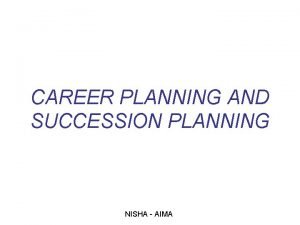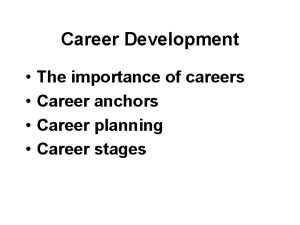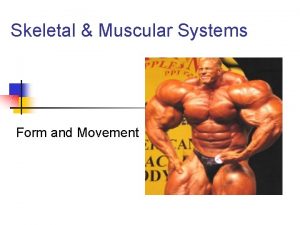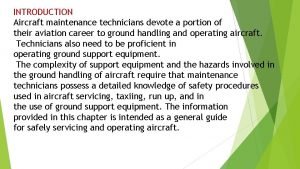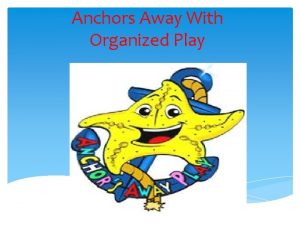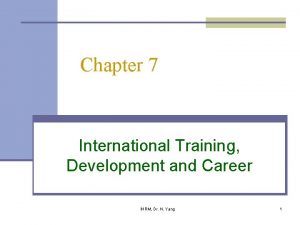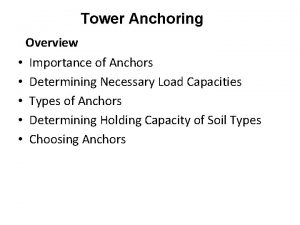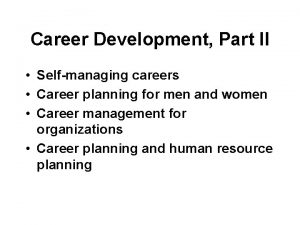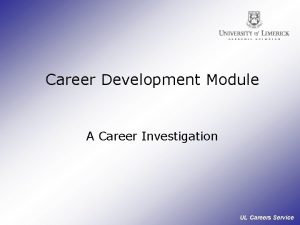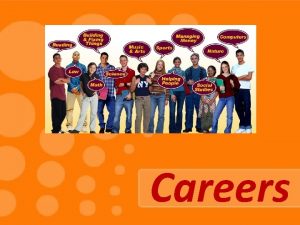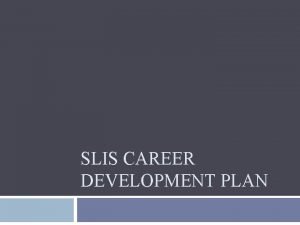Career Development The importance of careers Career anchors













- Slides: 13

Career Development • • The importance of careers Career anchors Career planning Career stages

The Importance of Careers • For organizations: Helps align staffing with strategy • For employees: A source of identification and a factor in quality of life

Career Anchors • • • Technical anchor Managerial anchor Security & stability anchor Autonomy anchor Entrepreneurial anchor

Career Planning • Employee responsibility: – Self-assessment, – Identify and analyze career options; – Decide and develop career objectives and needs; – Communicate career preferences to your manager; – Map out a plan with your manager.

Career Planning • Management responsibilities: – Encourage career planning process, – Assess realism of employee’s plans, – Provide information to employee about career planning resources, and career development opportunities such as job openings, training programs, and rotation assignments.

Changing Nature of Careers • The employment contract: Employees as free agents – Career competencies – Self-management • New career paths: More webbed than straight • Early & delayed retirement

Importance of Career Planning to Organizations • Effective utilization of human resources – Align staffing requirements to strategy – Develop promotable employees • Affirmative action and EEO – Assists in meeting goals – Assists in diversity management

Career Stages • • Exploration stage Establishment stage Maintenance stage Late career stage

Exploration Stage • Task Needs: – Experiencing varied job tasks – Self assessment – Job choice • Social-emotional needs – Occupational selfimage – Settling down

Establishment Stage • Task needs – – Learn the ropes Get challenging jobs Increase competence Be innovative • Emotional needs – Deal with competition, failure, conflicts – Develop autonomy

Maintenance Stage • Task needs – Technical updating – Coaching skills – Continue to rotate into new areas – Develop broad view of career • Social-emotional needs – Express midlife feelings – Rethink work, family

Late Career Stage • Task needs – Remain productive – Plan for retirement – Shift role from power to guidance – Identify successors – Develop outside interests • Social emotional needs – Re-envision work – Develop outside identity

Backwards & Forwards • Summing up – Career anchors – Changing nature of careers – Strategic importance of career planning – Stages or career progression • Looking ahead – Strategies for employees to selfmanage careers – Variations in career planning for men and women – Career planning and human resource planning
 Types of career anchors
Types of career anchors Types of career anchors
Types of career anchors Stores minerals and anchors muscles
Stores minerals and anchors muscles Aircraft tie down anchors for concrete
Aircraft tie down anchors for concrete Behavioral anchors for competencies
Behavioral anchors for competencies Pci anchor
Pci anchor Anchors away play
Anchors away play International training and development in ihrm
International training and development in ihrm National career clusters
National career clusters Formulas for career success
Formulas for career success Hình ảnh bộ gõ cơ thể búng tay
Hình ảnh bộ gõ cơ thể búng tay Bổ thể
Bổ thể Tỉ lệ cơ thể trẻ em
Tỉ lệ cơ thể trẻ em
